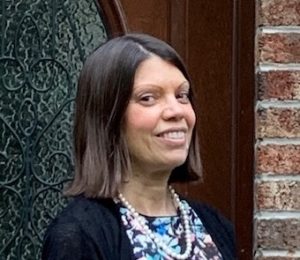A Writer’s Revision Obsession
A Writer’s Revision Obsession
 Types frantically at keyboard… Rereads and deletes… Sighs… Just one more edit… before submitting to critique partners, beta readers, agents, publishers. Yes, I’m that writer—desperate to tweak a sentence or adjust a character’s dialogue one last time. Perfectionist is a generous word to describe this obsession; anal-retentive is more accurate. Ring a bell?
Types frantically at keyboard… Rereads and deletes… Sighs… Just one more edit… before submitting to critique partners, beta readers, agents, publishers. Yes, I’m that writer—desperate to tweak a sentence or adjust a character’s dialogue one last time. Perfectionist is a generous word to describe this obsession; anal-retentive is more accurate. Ring a bell?
Truth is, I get a veritable high from the revision process. Of all the writing stages, from cranking out the first draft to (gasp) marketing and selling, revision is my favorite. For hours at a time, I lose myself strengthening character arcs, tightening plot points, introducing tension and twists, adding backstory and character depth. Even line editing provides a certain satisfaction: shortening dialogue and removing unnecessary words and awkward phrases. One of the reasons I enjoy this stage is that I’m convinced I’m improving the manuscript and inching closer to landing an agent, getting published, and, if I’m lucky, earning a glowing review or winning a contest. I even sense the novel taking on a new life of its own. As it toddles forward on unsteady legs, I proudly monitor its progress while guiding it surely and slowly toward its destination. Here’s my process in a nutshell.
High Level Outline, No Word Count Goal
Leveraging the top three to five beats from Jessica Brody’s Save the Cat! Writes a Novel, I create a high level plot outline, which guides the story but allows flexibility and freedom for the characters to take unanticipated twists and turns toward their goals, in an organic way. This approach falls somewhere between the plotter and pantser camps. Although word counts work well for some writers, I never set them when writing the first draft. I prefer to advance the plot steadily through the main beats, allotting five to six hours most weekdays. The draft typically takes me six to nine months to finish, and then the fun begins!
Second Draft, Track Changes Enabled
I read through the first draft, adding copious comments with word’s track changes feature enabled. My notes focus on potential plot holes, unconvincing dialogue, unexplained character emotions, motivations, or actions, scenes that drag and/or don’t move the plot forward. Then I tackle the changes. Since I typically write/revise for thirty to thirty-five hours a week, this could take a few weeks to one or more months. The important thing is, I don’t hold myself to an arbitrary word count but instead systematically revise the problem areas I identified.
Feedback from Critique Partners
When the second draft is complete, I usually do another read-and-revise before submitting it to critique partners. If you don’t already have a critique group or critique partner, I highly recommend finding one! These are other writers who give objective feedback tactfully and thoughtfully, which is invaluable. Yes, sometimes their feedback is painful to hear. That’s why I usually take several days to digest it. Mostly, their comments resonate, especially if multiple critique partners have similar input. Next I sketch out a plan for how to address the weaknesses. Often what helps my bruised ego is assuring myself that this feedback will improve the story and its chances of finding a good home. The feedback can launch a major rewrite of the manuscript, even several major rewrites. Depending on how many pages the critique partner(s) read at a time (my group reads fifty pages of each writer’s work once a month), it can take over a year to receive all the feedback for a full-length novel.
Input from Beta and Sensitivity Readers
After incorporating feedback from my critique partners, I send the manuscript to professional beta and/or sensitivity readers, who can provide excellent reader insight. Incorporating feedback from them should be careful and deliberate.
Final Editing Phase
Before querying the manuscript or submitting it to a publisher, I perform one or two last walk-throughs, focusing on copy/line editing: checking for improper sentence structure, tense, redundancy, inconsistencies, grammatical errors, spelling, sentence variety and length.
Just one more edit? Do it. Then take a breath and press send.
—
Jill Caugherty is the author of the historical novel The View from Half Dome (pub date 4/20/23) and the debut novel, Waltz in Swing Time. After holding software development, product management, and marketing positions in the high tech industry for nearly thirty years, Jill writes full time and offers editing services to other writers. She is a member of the Women’s Fiction Writers’ Association and the North Carolina Writers’ Network. Jill lives in Raleigh, North Carolina with her husband and daughter. Please visit https://www.jillcaugherty.com for more information.
The View from Half Dome
 Isabel longs to escape her squalid San Francisco neighborhood. While her mother struggles to make ends meet and her older brother serves with the CCC at Yosemite, she manages the household and comforts her younger sister with stories about an idyllic imaginary world. Desperate for a taste of freedom, she takes matters into her own hands — with tragic consequences.
Isabel longs to escape her squalid San Francisco neighborhood. While her mother struggles to make ends meet and her older brother serves with the CCC at Yosemite, she manages the household and comforts her younger sister with stories about an idyllic imaginary world. Desperate for a taste of freedom, she takes matters into her own hands — with tragic consequences.
Distraught, she flees to Yosemite, where she falls in love with its majestic beauty. Inspired by Enid Michael, the park’s only female ranger-naturalist, Isabel hikes, learns new skills, and discovers an inner strength she never knew she had. But even as she relishes her independence, she hides her grief, along with a terrible secret she fears will destroy relations with her family. And when she receives upsetting news from home, Isabel must decide if she can assist her family without sacrificing her chance at a new life.
Rich with historical detail and lyrical prose, The View from Half Dome is a moving coming-of-age story about hope, forgiveness, Nature’s healing power, and the courage to overcome societal boundaries and grow, regardless of age.
Category: On Writing






























